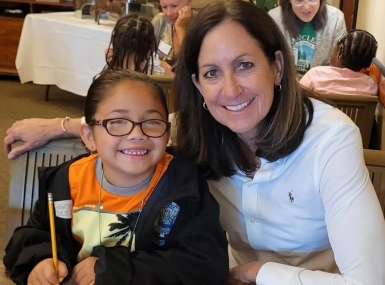Counties beef up online services during pandemic
Upcoming Events
Related News

Key Takeaways
Counties have faced constant struggles to adapt to the challenges posed by the COVID-19 pandemic. Simple procedures once handled in person are now held online as residents seek out forms, search for information and ask questions. Many counties were forced to create new ways to interact with their residents by overhauling their websites or by finding cheaper alternatives.
Offering services on the Internet is also a way to reach those who have difficulty getting to a physical building, even when there isn’t a pandemic. “When government is constantly being asked to do more with less, the Internet is playing a vital role in allowing government to better serve all of its citizens” the Department of Justice noted in a report back in 2010, on how local governments with accessible online features are reaching out to the disabled community and others.
For IT Director Chet Biggers of Robertson County Tennessee, doing more with less is his specialty. Biggers is the sole IT specialist in charge of supporting 24 Commissioners and every county employee in all departments. When the pandemic hit, Biggers said “It was a challenge in itself, just to get them [County Officials] acclimated to standard protocol.” Every experience was new and came with unique challenges.
A well-designed website can be a powerful resource for the community, providing easy access to information about county procedures, COVID testing, emergencies and much more. In 2020, many counties found their online systems were unable to handle county residents’ needs and began the process of creating or updating a website. Now in 2021, many have launched their sites through independent contractors or municipal-focused developers.
Pandemic uncovers online struggles
Pike County, Pa. launched a redesigned website after the struggles of the pandemic made their previous website difficult to use.
The cumbersome site, built at least 20 years ago, was redesigned from the ground up to improve the user experience and provide as much information as possible with as few clicks as possible.
Residents can get email and text notifications, quickly find county news and announcements, access county meeting recordings and much more. Pike County has joined a growing wave of rural counties that are finding new ways to interact with their residents.
County launches new site during pandemic
In Prince William County, Va., the county started rebuilding its website in 2019 and launched the new site earlier this year, in April. Director of Communications Sherrie Johnson and the county’s IT Department tackled the challenge of crafting an up-to-date website during the pandemic. At a cost of $1.5 million, the website rebuild was a massive undertaking made easier through extensive grant funding covering more than 50 percent of the undertaking.
Prince William County formed several committees, reviewing more than 100 award-winning websites to narrow down the key features that would best serve their residents and identifying what the old website struggled to provide. Johnson said the old website had “complicated navigation” which was “disorienting to site visitors.” The Prince William County website is a .gov site, which the Federal Cybersecurity and Infrastructure Security Agency (CISA) and NACo highly recommend counties utilize for the additional security.
The county was an early adopter of social media and broadcast technology, allowing for an easier time reaching residents and providing the information necessary during the pandemic, despite the aging website. Preparation before the crisis paid off for the county.
Municipal-focused web developers build websites with the goal of making them easy to use, providing a network for communicating and educating municipal leaders on technology issues and handling the increasingly difficult challenge of online security.
Website development can be expensive depending on what the website needs to accomplish, what laws it must comply with and how many residents it serves. With a price tag that can easily run between a few thousand dollars to well over $1 million, many counties have turned to alternate means of creating online spaces for residents.
Meetings previously held in person transferred to online platforms such as Zoom and Microsoft Teams, prompting many counties to ask critical questions about online security, data storage, online records access and more, after a wave of hackers disrupted online meetings early in the pandemic.
Across the United States, IT departments worked behind the scenes to create safe and secure ways for county officials to work from home. In rural Iowa, IT departments had to adapt quickly to the changes. In Buchanan County, Iowa, IT Director Jason Vandenburg took a program used by the local police department to serve county employees.
Buchanan said they use a Zero Trust Network Access (ZTNA) system to allow for remote access in the field. These programs work by only allowing a user to access information necessary for their position.
Vandenburg said early in the pandemic, a lot of counties discovered how important IT professionals are as everyone was forced to work from home, including the IT department. Vandenburg said it is critical for counties to begin upgrading their servers with at least a backup solution in case of emergencies.
In Crawford County, Iowa, the IT department was formed during the pandemic and IT Director Jacob Langholz spent his time building infrastructure to maintain security in the county.
Langholz noted that a lot of the typical security concerns were unfounded since the infrastructure was yet to be built. “You can’t break a window if it doesn’t exist,” he said.
Cybersecurity is key
Meanwhile, Langholz has been implementing new online features that will allow for a host of new options, like online streaming of county meetings. He has also been teaching the community about cybersecurity.
“You have to be just as vigilant about a computer as you would a cash register or safe,” he said. Iowa counties also received help through the state, which has contracted with cybersecurity companies to further boost computer security.
Some counties have found it easier to live stream and record meetings by using YouTube and Facebook Live, which provide free video storage and is easily accessible and understood by most residents.
Ravalli County, Mont. has a long history of streaming and recording meetings as well as publishing them on their website. Due to COVID restrictions, the public comment part of their meetings went completely online, and residents were encouraged to weigh in on issues via email, telephone and Zoom. Even counties prepared for online participation had to adapt.
Whether through creating Facebook groups, building a website from scratch, or updating old equipment, counties across the country face considerable growing pains as they expand further online to meet residents’ needs.

Attachments
Related News

County reading program prevents ‘summer slide'
Dive into Reading grew by seven times in its first six years, with the Manatee County, Fla. library system working with the school district to bus students to the reading sessions.

DOJ issues final rule for state and local governments to implement web-based accessibility standards
On April 8, the U.S. Department of Justice (DOJ) announced the release of a web accessibility final rule for state and local governments.

County Countdown – April, 22, 2024
Every other week, NACo’s County Countdown reviews top federal policy advocacy items with an eye towards counties and the intergovernmental partnership.